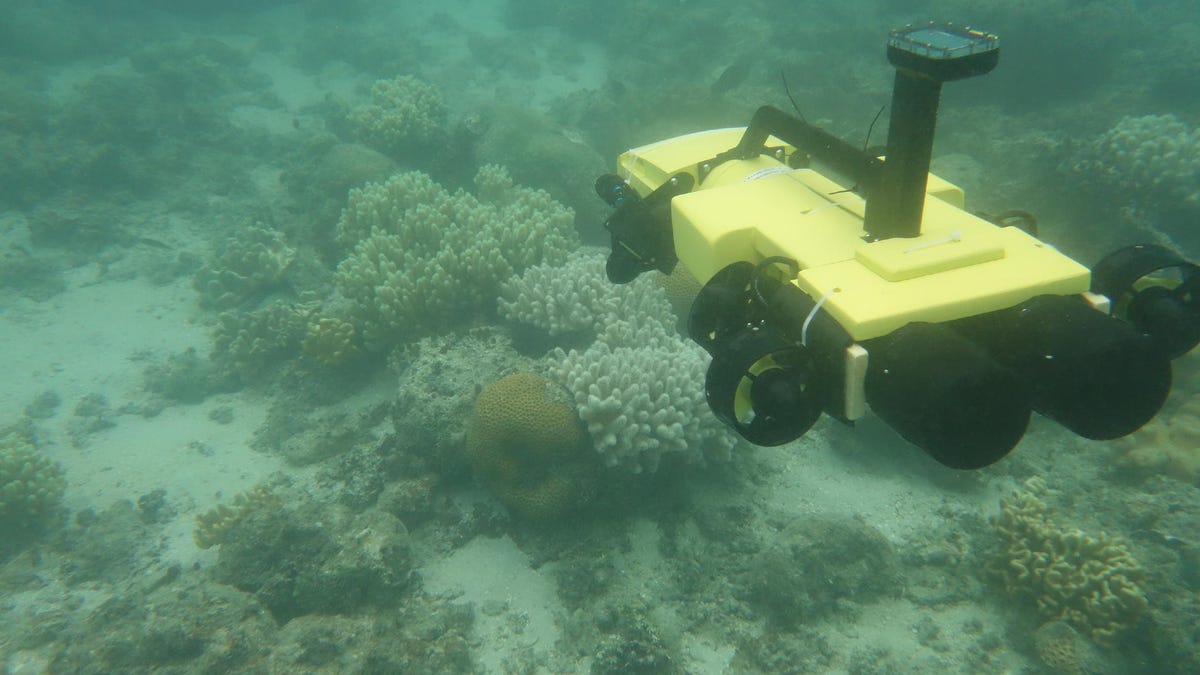Autonomous killer drones begin patrolling the Great Barrier Reef
RangerBot can instigate an injection into starfish plaguing the reef, killing them with deadly toxins. Thankfully, humans are safe (for now).

The Great Barrier Reef is in grave danger, but a killer drone may just be key in helping it heal.
Problems for the reef continue to mount: Coral bleaching events become more frequent as climate change spirals out of control, poor governance, increasing industrialization, overfishing and pollution runoff have all contributed to its decline. It's easy to point the finger at human beings -- and so we should -- but there's another creature that deals great damage to the reef.
In fact, it is suspected that a lot of the increasing human activity in and around the reef has driven crown-of-thorns starfish numbers sky high and that's a problem. The starfish feeds on native coral that call the reef home -- and they are key to the reef's ecology. No coral, no reef and so the starfish must be destroyed.
Enter the Killer Drones .
In 2015, researchers at the Queensland University of Technology (QUT) unveiled the technology known as the Crown-Of-Thorns Starfish robot (COTSbot) to deal with the threat. When deployed, the autonomous robot was able to seek out crown-of-thorns starfish (with 99 percent accuracy) and inject them with a chemical cocktail that causes them to break out in nasty blisters and eventually die.
Now, that same research team has unveiled RangerBot, the latest iteration on that idea. The yellow underwater drone looks kind of like a tiny fluorescent whale shark with thrusters instead of fins. It has been called a "Swiss army knife" because along with controlling the starfish populations, it can monitor the reef for health indicators and map underwater areas, working for up to eight hours each day.
Compared with human divers performing the same task, the RangerBot is cheaper, more efficient and able to operate at all hours of the day and night.
"Weighing just 15kg and measuring 75cm, it takes just 15 minutes to learn how to operate RangerBot using a smart tablet," said Professor Matthew Dunbabin, who leads the research team.
"We also spent a lot of time getting the user interface as simple to use as possible so that as many of our stakeholders (from researchers, management authorities and school children) could potentially operate it with a small amount of training."
That ease of use could lead to the RangerBot being deployed in other underwater ecosystems around the world.
"Different people have different use cases and we have structured the hardware and software to be changed/upgraded with different vision-based tasks as well as payloads," said Dunbabin.
"Environmental robotics is a real passion of ours and we see so much potential for these advanced technologies to transform the way we protect the world's coral reefs."
Scientists and researchers have been exploring a multitude of cutting-edge technologies in an attempt to save the reef, which continues to suffer at the hands of climate change and pollution. Drones, cameras and artificial reefs and simulations are being employed to stop the degradation of the World Heritage Site as it continues to undergo potentially irreversible change.
Rebooting the Reef: CNET dives deep into how tech can help save Australia's Great Barrier Reef.
The Smartest Stuff: Innovators are thinking up new ways to make you, and the things around you, smarter.

